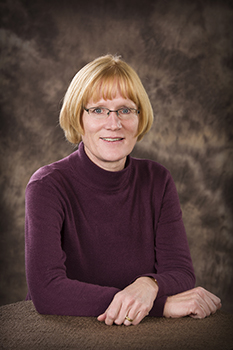SARChI Chair on disease resistance and quality in field crops awarded in UFS Department of Plant Science

Prof Labuschagne |
A South African Research Chairs Initiative (SARChI) chair has been awarded in the Department of Plant Sciences at the University of the Free State (UFS). The chair will be headed by Prof Maryke Labuschagne, and will focus on crop quality breeding and disease resistance in field crops.
The disease resistance research by the chair will be headed by Prof Zakkie Pretorius. The disease resistance breeding will be a continuation of the internationally-acclaimed wheat rust research that Prof Pretorius has been conducting during his career.
The quality breeding will focus on crop protein quantity and quality as well as on iron, zinc, and beta carotene biofortification of staple crops such as wheat, maize, and cassava.
Prof Labuschagne believes that food security is one of the key factors for stability and prosperity on the continent. Her research and that of her students focuses on the genetic improvement of food security crops in Africa, including such staples as maize and cassava. “These crops are genetically improved for yield, drought tolerance, disease, and insect resistance, as well nutritional value,” she said.
Last year, one of Prof Labuschagne’s PhD students, Bright Peprah, received an award for $473 000 from the competitive Program for Emerging Agricultural Research Leaders (PEARL) of the Bill and Melinda Gates Foundation for his project on improving the beta-carotene content in cassava.
Prof Labuschagne also received the prestigious ‘Continental Lifetime Achiever Award’ from Africa’s Most Influential Women in Business and Government Programme (MIW) last year for her commitment and continuous contributions to food security. She is an NRF-rated researcher, and author or co-author of over 160 articles in accredited journals.
Research Chairs have been designed by the Department of Science and Technology, together with the National Research Foundation, to attract and retain excellence in research and innovation at South African public universities.